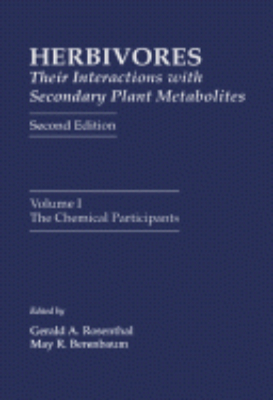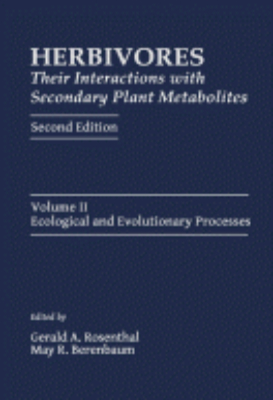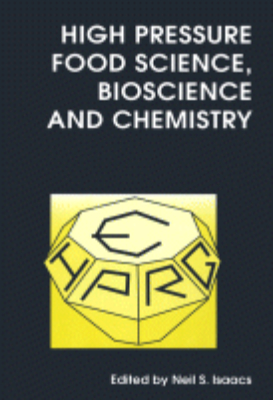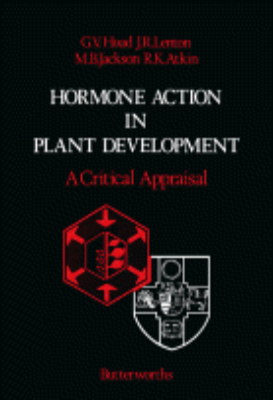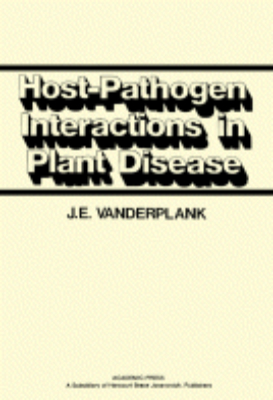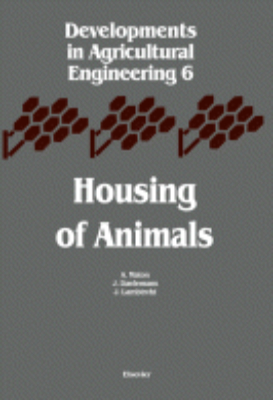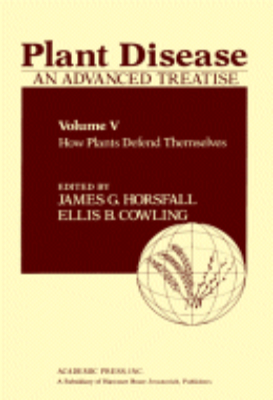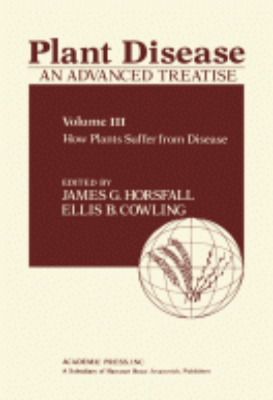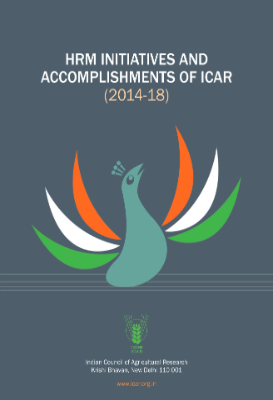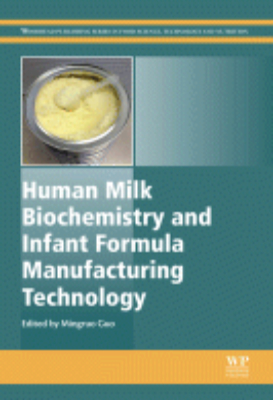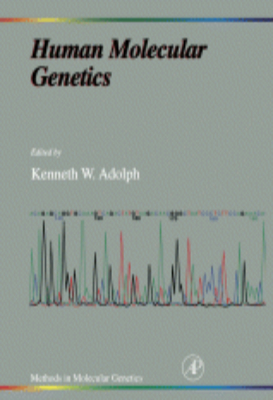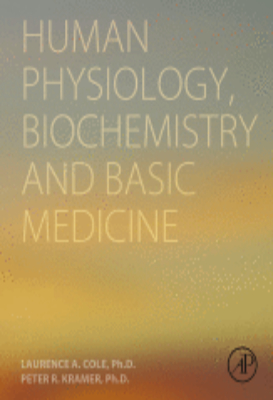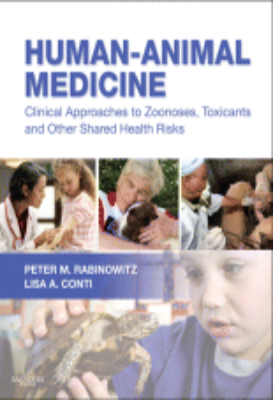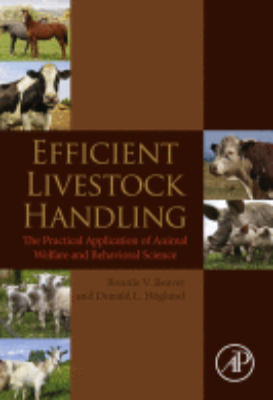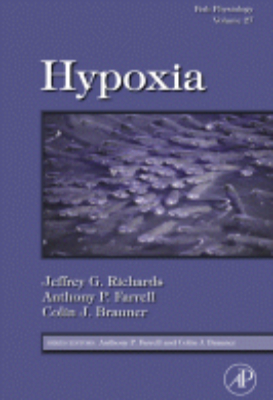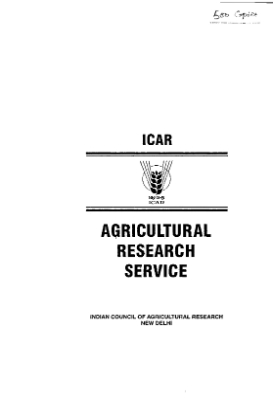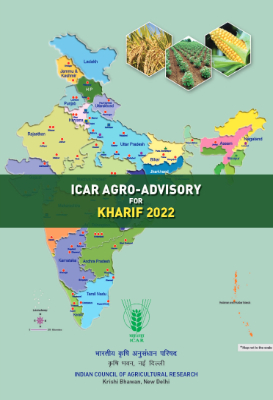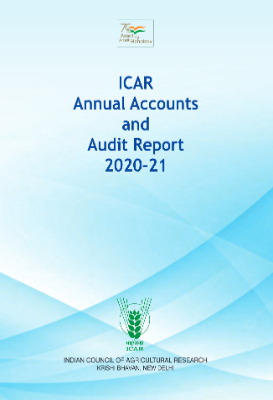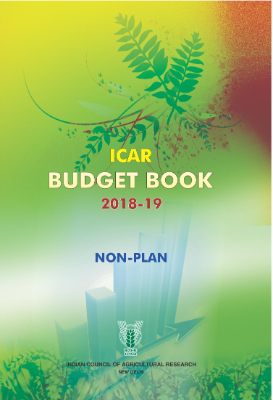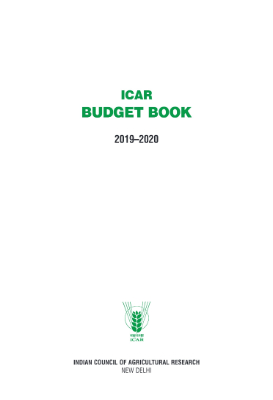ebooks
Herbivores: their Interactions with Secondary Plant Metabolites: Volume I
It has been more than ten years since the first edition of this book was published. During this time, our understanding of the interactions between plants and the animals that consume them, as mediated by secondary compounds (allelochemicals) of plants, has grown dramatically.In theHerbivores: Their Interactions with Secondary Plant Metabolites, Second Edition, only those areas of research where significant progress has been made since 1979 are included, and most of the contributing authors are new. This edition has been split into two volumes due to the vast amount of new material that has been generated on this subject.Both volumes will be of interest to evolutionary biologists, agriculturists, chemists, biochemists, physiologists, and ecologists.Volume 1, provides an exhaustive update and review of the chemical and biochemical bases for the role and function of allelochemicals in their defense against herbivores.Volume 2, scheduled for publication in April 1992, provides a current update of the research on the ecological roles and evolutionary nature of secondary plant metabolites in their interactions among plants and as protective agents against environmental stresses such as consumption by herbivores.
Herbivores: their Interactions with Secondary Plant Metabolites: Volume II
"This volume presents the latest research on herbivores, aquatic and terrestrial mammals and insects. The Second Edition, written almost entirely by new authors, effectively complements the initial work. It includes advances in molecular biology and microbiology, ecology, and evolutionary theory that have been achieved since the first edition was published in 1979. The book also incorporates relatively new methodologies in the area of molecular biology, like protein purification and gene cloning. Volume II, Ecological and Evolutionary Processes, also opens up entirely new subjects: The discussions of interactions have expanded to include phenomena at higher trophic levels, such as predation and microbial processing and other environmental influences. Both this and Volume I, The Chemical Participants, will be of interest to chemists, biochemists, plant and insect ecologists, evolutionary biologists, physiologists, entomologists, and agroecologists interested in both crop and animal science. Key Features. Presents coevolution of herbivores and host plants. Examines resource availability and its effects on secondary metabolism and herbivores. Studies physiology and biochemistry of adaptation to hosts. Includes tri-trophic interactions involving predators and microbes"
Herbivorous Insects
Herbivorous Insects: Host-Seeking Behavior and Mechanisms addresses mechanisms of searching behavior leading ultimately to host location of herbivorous insects. It is divided into four sections, wherein the first two sections deal with neurophysiology and the diversity of behavioral induction cues. The third section covers the searching mechanisms as affected by insects' breadth of diet. The last part examines the evolutionary analysis of the behavioral and physiological adaptations in insect/host plant relations. This book starts with an introduction to the chemical sensory system as it relates to host selection in general. This is followed by considerable discussions on host-seeking behavior and allied patterns in behavior. This text also includes the study of oviposition behavior in butterflies belonging to Papilionidae. The third section presents host selection and colonization by three insects within the saprophage-predator continuum, namely, Hylurgopinus rufipes, Scolytus multistriatus, and Pissodes strobi. The behaviors by which certain oligophagous insects locate and select food plants are also considered. The concluding part addresses the unifying theme and the diversity of responses of phytophagous insects to plants. The book provides direction toward developing a unifying theme and improving the ability to unravel the complexities of insect/plant interactions. Behaviorists, ecologists, entomologists, evolutionary biologists, and physiologists will find this book invaluable.
Hormonal Steroids Biochemistry Pharmacology and Therapeutics
Hormonal Steroids: Biochemistry, Pharmacology, and Therapeutics, Volume I focuses on various research on steroids and their biological and medical involvements. Comprised of 60 chapters, the book presents the literature of various authors who have conducted research on the relationship between hormonal steroids and biochemistry, pharmacology, and therapeutics. The discussions start with the identification of steroids with hormone-like activities. This discussion includes the nature, compositions, properties, possible uses, and reactions of these hormones when exposed to different conditions and controlled environments. The book then proceeds with discussions on synthesis and metabolism of hormonal steroids. These discussions are supported by graphical representations, reviews, recommendations, and methodologies. The book then explains the control of synthesis and release of steroid hormones. This part notes the relationship of renal and adrenal hormones; the control and production of corticosterone; neurosecretion and control of the pituitary gland; and release of ovulating hormones. The book also highlights the mechanism of steroid action, noting the probable interrelationships of steroids, nonsteroids, intermediary metabolism, and inflammation. Various research are presented on the possible clinical applications of steroids. The text is a vital reference for readers who are interested in the study of hormones.
Hormone Action in Plant Development A Critical Appraisal
Hormone Action in Plant Development - A Critical Appraisal documents the proceedings of the Tenth Long Ashton Symposium, September 1986. The symposium was convened to assess the evidence for and against the view that plant hormones are endogenous regulators of plant development. The meeting also aimed to focus on and assess promising strategies for future research. The symposium opened with the Douglas Wills Lecture, given by Professor Carl Leopold. In many respects, progress in research on animal hormones seems greater than in the plant sciences and there may well be merit in following progress in animal hormone research as suggested by Professor Leopold. The symposium was comprised of four sessions. The introductory session considered the coordinating role of hormones in plant growth and development, and focused on hormone action at the molecular level, including their binding to receptors and their control of gene expression. The next two sessions embraced contributions on the experimental manipulation of development by genetic (notably by biochemical mutants), chemical (for example, with gibberellin/biosynthesis inhibitors), and environmental (including drought stress) means. All these approaches consolidated the central importance of hormones in plant growth. In the final session, three speakers suggested some promising avenues for future research into the physiology, biochemistry, and molecular biology of plant hormones.
Host-pathogen Interactions in Plant Disease
This book describes the genetics, biochemistry, and epidemiology of host-pathogen interactions in plant disease, especially as they concern the breeding of crops for disease resistance. It analyzes a wealth of information that has not previously been recorded in other books or reviews. Some of it stems from basic surveys of disease in the field. The analysis of these surveys not only explains a great deal about host-pathogen interactions that was heretofore obscure, but also indicates directions for future research. Other data, from original papers, have now been coordinated for the first time and organized in a way that suggests new areas of research. The book contains more than fifty new tables that integrate data and relate them to general principles of host-pathogen interactions. For plant pathologists and plant breeders concerned with the control of plant disease, the book shows how to manipulate the host and, indirectly, the pathogen in order to control disease. It analyzes records of resistance against disease that time has shown to be stable in an effort to determine what has kept this resistance stable. It also analyzes the structure of virulence in populations of a pathogen, and demonstrates how virulence can be deliberately restricted. The author updates information on the gene-for-gene hypothesis and discusses the numerical and biological implications of the hypothesis. He analyzes the structure of epidemics based on three fundamental variables: the initial inoculum, the progeny/parent ratio of the pathogen, and the latent period. The author concentrates on the progeny/parent ratio - a subject not hitherto probed in detail in the literature - and shows how to determine the type of epidemic that can occur.
How Plants Defend Themselves
Plant Disease An Advanced Treatise, Volume V: How Plants Defend Themselves describes the active, passive, physical, chemical, mechanical, and physiological defense systems of plants against the pathogens. Divided into 23 chapters, this volume discusses theories, experimental approaches, and ways to help plant defend themselves. The opening chapters of this volume deal with certain general aspects of plant defense, such as the theories of tolerance to disease and the time sequence of defense, including a dynamic model of defense. A chapter discusses how plant populations defend themselves in natural ecosystem and the implications of disease management on agroecosystems. Considerable chapters examine the defense by the host by analogy with defense of a medieval castle, such as perimeter, internal, and chemical defenses. Discussions on the defenses triggered by the invading pathogen; recognition and compatibility phenomena; the concept of hypersensitivity; the role of phytoalexins in defense; and the metabolic detoxification done by plants to suffer less damage from toxins are provided. This volume also discusses the theory and mechanisms of hypovirulence and hyperparasitism. The concluding chapters summarize the effects of numerous nutrients on disease and the mechanisms involved. This volume is an invaluable source for plant pathologists, mycologists, advanced researches, and graduate students.
How Plants Suffer from Disease
Plant Diseases An Advanced Treatise, Volume III: How Plants Suffer from Disease deals with the mechanism on how individual plants suffer from disease. Organized into 19 chapters, this volume discusses plant growth, the conceptual theory of disease development in plants, and the occurrence of different kinds of impairment in diseased plant system. The opening chapters outline the array of physiological functions that are essential in the growth and development of healthy plants. This text also describes the effect of disease on the capture, transfer, and utilization of energy by plants. The subsequent chapters discuss specific types of dysfunction in plant system, including food flow, water system, mineral nutrition, and growth alteration. Other chapters deal with other plant diseases, such as crown gall, teratoma, dysfunction and shortfalls of symbiont responses, disrupted reproduction, and tissue disintegration. This volume also examines various physical factors of the environment that impose mechanical or other physical stresses on plants. It also discusses the engineering mechanics of growing plants and the effect of various pathogens and microorganisms on plant strength and plant organ structural integrity. Other chapters deal with the effect of disease on cell membrane and permeability and on intermediary plant metabolism. The concluding chapters cover the genetic aspects of diseased plants and the diseases that induce senescence and diseases that senescence induced. This volume is an invaluable source for plant pathologists and researchers, mycologists, virologists, and graduate students.
Human Cytogenetics
Human Cytogenetics: Clinical Cytogenetics, Volume II presents the general theoretical principles and clinical aspects of cytogenetics, a branch of genetics that deals specifically with the study of the chromosomes. The volume focuses on the clinical cytogenetics of human. It discusses the sex chromosomes and their abnormalities and the abnormalities of sexual development and differentiation; mechanism of sex determination in mammals; major autosomal abnormalities found in human populations; and chromosome abnormalities in relation to human pregnancy wastage and chromosome changes in neoplasia. The book will be a great reference book for geneticists, cytogeneticists, pathologists, clinicians, and medical students.
Human Milk Biochemistry And Infant Formula Manufacturing Technology
"Since infant formula substitutes for human milk, its composition must match that of human milk as closely as possible. Quality control of infant formula is also essential to ensure product safety, as infants are particularly vulnerable food consumers. This book reviews the latest research into human milk biochemistry and best practice in infant formula processing technology and quality control. Key Features. The most up to date reference on infant formula processing technology. Reviews both human milk biochemistry and infant formula processing technology for broad and applied coverage. Focusses exclusively on infant formulae"
Human Physiology Biochemistry and Basic Medicine
"Human Physiology, Biochemistry and Basic Medicine is a unique perspective that draws together human biology, physiology, biochemistry, nutrition, and cell biology in one comprehensive volume. In this way, it is uniquely qualified to address the needs of the emerging field of humanology, a holistic approach to understanding the biology of humans and how they are distinguished from other animals. Coverage starts with human anatomy and physiology and the details of the workings of all parts of the male and female body. Next, coverage of human biochemistry and how sugars, fats, and amino acids are made and digested is discussed, as is human basic medicine, covering the science of diseases and human evolution and pseudo-evolution. The book concludes with coverage of basic human nutrition, diseases, and treatments, and contains broad coverage that will give the reader an understanding of the entire human picture. Key Features. Covers the physiology, anatomy, nutrition, biochemistry and cell biology of humans, showing how they are distinguished from other animals. Includes medical literature and internet references, example test questions, and a list of pertinent words at the end of each chapter. Provides unique perspective into all aspects of what makes up and controls humans"
Human-Animal Medicine
"Human-Animal Medicine is an innovative reference exploring the unprecedented convergence of human, animal, and environmental health, triggering global pandemics and requiring new clinical paradigms. The ""One Health"" approach calls for greater communication and cooperation between human health care providers, public health professionals, and veterinarians to better address vital issues of emerging diseases and environmental change. This incredibly timely book provides, for the first time, practical guidelines for ""One Health"" collaborations in a wide range of clinical human-animal health issues, including the H1N1 virus, zoonotic diseases, the human-animal bond, animal allergy, bites and stings, and animals as ""sentinels"" for toxic environmental health hazards. Key Features. UNIQUE! For each condition, specific steps human health care providers, veterinarians, and public health professionals must take to prevent and manage disease.. UNIQUE! Comparative tables of disease signs, diagnosis and treatment in humans and animals for easy reference.. UNIQUE! Guidelines to detect and improve environmental factors affecting the health of humans and animals.. Occupational health guidelines for preventive care of animal workers including veterinary personnel, farmers, pet store employees, and zoo workers.. Treatment of emerging disease issues including zoonoses, H1N1 virus, harmful algae blooms, and animal-related pesticides. UNIQUE! Sample protocols facilitate professional communication between veterinarians, human health clinicians, and public health professionals.. Legal and ethical aspects of ""One Health"" that human health providers and veterinarians need to know."
Humane Handling of Livestock
"Efficient Livestock Handling: The Practical Application of Animal Welfare and Behavioral Science brings together the science-based disciplines of animal behavior and welfare to discuss how knowledge of one area (behavior) can be used to promote the other. Emphasis is on cattle and horses, but swine, sheep, and goats are also covered. Three major areas are included and integrated into a practical approach to working with the various species. Basic behavior as it applies to handling is discussed, with differences noted between species. The connections of behavior and handling are covered, and practical applications discussed, both with a liberal use of pictures and videos to bring the concepts to life. Key Features. Incorporates a clear, approachable style for researchers and practitioners alike, facilitating understanding of the techniques described. Features supplementary video content on a companion site, providing practical demonstration of the topics discussed in the work and a useful tool for learning the concepts presented. Includes extensive references, increasing the book's utility for serious researchers as well as those who want to implement better handling practices"
ICAR Budget Book 2021-22
The Indian Council of Agricultural Research (ICAR) is an autonomous organization at the national level
responsible for the organization and management of research, education and extension in the field of agriculture,
animal sciences and fisheries. The ICAR operates national research and training network consisting of a
number of diversified institutions, viz. Central Research Institutes (CRIs), National Research Centers (NRCs),
Project Directorates (PDs), Project Coordinating Units (PCUs), etc. The ICAR has, thus, been instrumental in
the establishment of innovative institutions for higher education, research and extension training. It has provided
not only developmental assistance and technical guidance but has helped in developing appropriate institutional
models and research strategies.
In the furtherance of its objectives, the ICAR receives budgetary support from the Government under the
bye-laws of the ICAR, by way of :-
(i) Government of India grants;
(ii) Other sources (Internal Resource Generation)
ICAR has fully implemented the Treasury Single Account system with effect from 1st August, 2020. Due
to merger of Plan & Non-Plan Budget from the year 2017-18, the Government?s classification will be done on
Revenue and Capital. The total expenditure to be met out of the Government of India grants has been divided
in three components under Grant for Creation of Capital Assets, Grant-in-Aid-Salary & Grant-in-Aid General
including Pension in respect of various subject matter division, which are further divided into components i.e.
Other than NEH, TSP, SCSP, NEH, TSP and SCSP.
The Budget Book of ICAR comprises of information on summary of Government grant, revenue receipts and
targets, division wise and unit-wise allocation i.e Budget estimates, revised estimates and Actual expenditure
(Part I-VI).
Part-VII gives summary of the cadre strength of Scientists and other categories.
ICAR now and ahead…
The Indian Council of Agricultural Research is an autonomous apex body responsible for the organization and management of research and education in all disciplines of agricultural sciences: It has been reorganized twice. In 1965, the ICAR became the nodal agency for coordinating agricultural research in the country. It gained administrative control over the various institutes and commodity research institutes. Late Dr B.P. Pal took over as the first scientist VicePresident. Dr Pal instituted the Alndia Coordinated Research Projects on various crops to integrate different disciplines and different institutions and universities for an effective national grid of coordinated experiments, He has been internationally acclaimed for this contribution. In 1973, the Agricultural Research Service (ARS) was started by Dr M.S. Swaminathan, the first Director-General and Secretary to the Government of India, and Dr Pal?s successor, to enable scientists to move to other institutes within the system or sister organizations ? the CSIR, BARC, etc.

